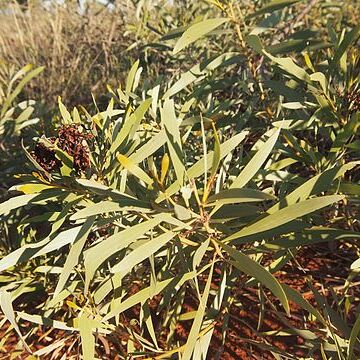A shrub or small tree. It grows 2-6 m tall. New shoots have a brownish resin. The phyllodes can be slightly curved and point upwards. They are 8-17 cm long by 1-2 cm wide. The pods are narrow and fairly straight and 5-8 cm long by 3-4 mm wide. The seeds are 3.5-4 mm long. They are shiny and dark brown to black.


